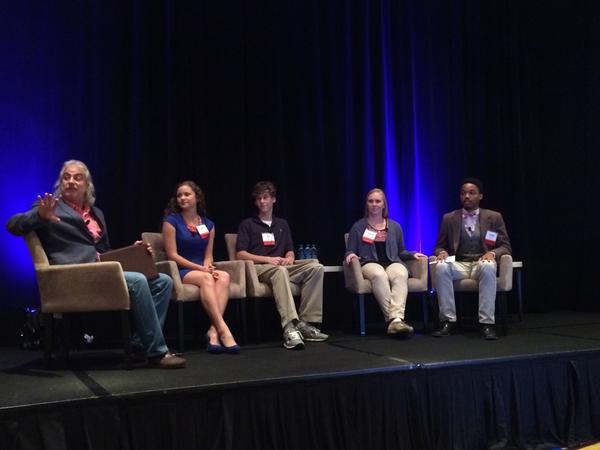For the past few years, we've focused our professional
learning opportunities on what are collectively referred to as 21st
Century skills and attributes. It was part of our strategic plan in 2005, and
has continued to be a part of every staff development plan since. We've
explored many different models, looking for the best fit:
- 21st Century Fluencies (Ian Jukes, 21st Century Fluency Project)
- 4 C’s: Communication, Collaboration, Critical Thinking, Creativity (EdLeader21)
- PBL: Project-Based Learning (Buck Institute for Education)
- Authentic Intellectual Work (Center for Authentic Intellectual Work)
- Curriculum 21 (Heidi Hayes Jacobs)
While our efforts have resulted in pockets of the types of
learning experiences that we know most impact student learning and best prepare
them for their futures, the changes have not been systemic. Some teachers
embrace the concepts and ideas and weave them into everything they do, while
others view them as something to do in a single showcase unit. But not all teachers have opted-in to the
professional learning opportunities. And some have attended with the best of
intentions to make changes, and then have later fallen back into instructional
and assessment strategies that have worked for them historically. So, in a
district that excels on standardized assessments that are publicized and
lauded, how do we systemically support teachers to incorporate these strategies
into their work with kids? The answer, we believe, is by embedding these
dimensions into the curriculum review process in a meaningful way.
When we were at EdLeader21 in October, we were inspired by
Karen Cheser’s, Chief Academic Officer of Boone County Schools (KY), IGNITE
presentation, “The
Power of One Year: 365<1 Lifetime.” We decided that day that we would
leverage all of our assets – human and otherwise – to make this the year that
we the dimensions of deeper learning are integrated into our students’ experiences.
Here’s our progress so far.
Day 1: All in! We decide to push-in to curriculum review
process in a much more significant way.
Day 35: Assistant Superintendent for Instruction Eric
Schneider discovers Washoe County School District Guide to Planning Instruction for 21st
Century Learners. This model inspires the team to consider how we may
create a rubric that teachers could use to evaluate their curriculum, instruction,
and assessments.
Day 41: Teaching and Learning team attends Curriculum
Leaders of Minnesota “Leading 21st Century Systems” conference
featuring Valerie Greenhill from EdLeader21. The Input-Output-Impact exercise
frames motivates us to move into action. We commit to creating the Minnetonka
Deeper Learning rubric on November 26 (Day 55).
We've already set some additional deadlines to keep us on our 365 day target.
Day 78: Provide professional development around curriculum and assessment writing to our teacher instructional coaches (TICs) and technology teachers-on-special-assignment (tech TOSAs). Digitize rubric, embedded with links on how to move from one level to the next.
Days 98 & 104: Present first draft to district department chairs and site staff development chairs.
The 365 days are going to fly by if we don't continually make this a priority. By involving all of the Teaching and Learning team, we're sure to make the most of the 8760 hours!







